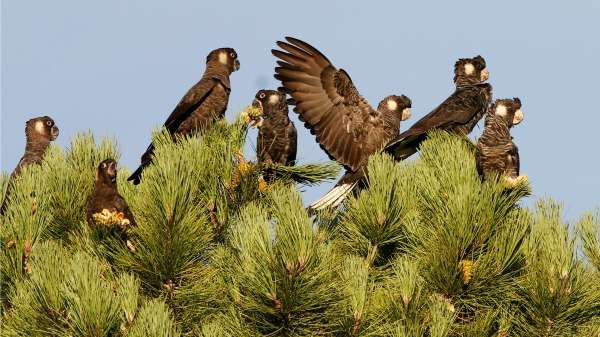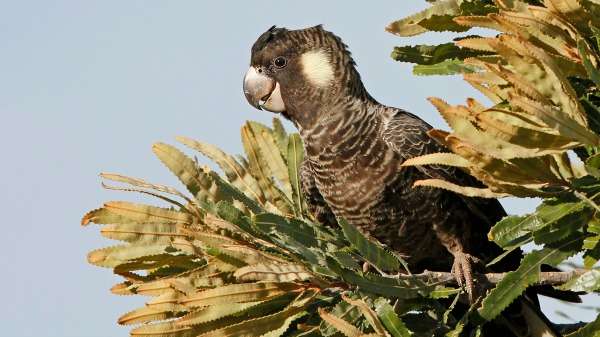Carnaby's future bleak according to latest count

The population of an iconic, endangered WA cockatoo species continues to decline, according to the latest data from one of Australia's largest citizen science surveys.
Big, boisterous flocks of Carnaby's black cockatoos (Calyptorhynchus latirostris) are a familiar sight in Perth's skies, but a recent report suggests their numbers are decreasing by an estimated 15 per cent each year.
Birdlife Australia's seventh Great Cocky Count in April involved more than 600 volunteers staking out nearly 300 roosting sites mainly across the Perth-Peel coastal plain, and in regional areas.
The survey results, released at the WA Threatened Species Forum in October, found flock sizes the number of occupied roost sites were in decline.
Historical data suggests the population of Carnaby's, which are endemic to WA's south-west, had halved in the past 45 years, Birdlife Australia Cockies in Crisis coordinator Tegan Douglas says.
"If the current trend continues, their population will drop by another 50 per cent in the next five years, which is really quite staggering," Ms Douglas says.
The latest count recorded 5,518 Carnaby's cockatoos in the Perth-Peel coastal plain, compared to 7,155 last year.
Almost half the birds were documented within 1km of the Gnangara pine plantation, which Ms Douglas says emphasises the site's importance for a species being impacted by Perth's urban sprawl.

The cockatoos are relocating into pine plantations as Perth suburbs expand into bushland, but are left homeless when the plantations are cleared, she says.
Widespread clearing across the Wheatbelt had also fragmented and limited the availability of suitable nesting hollows when Carnaby's reach breeding age at about four years old.
"The females return with their mate to the exact same site they were bred at," she says.
"But if in the meantime those trees have disappeared and there is nowhere for them in the vicinity to breed, we do not know what is happening to those birds."
She says an ageing Carnaby's population could also be contributing to smaller flock sizes, with birds not surviving to breeding age.
BirdLife Australia has been working on the species' recovery plan since 2001.
Activities aimed at stemming the decline include education programs, supporting landholders to preserve and restore remnant vegetation, fencing and revegetation projects.
As well as identifying and monitoring nesting sites, collecting population and distribution data and installing artificial nesting hollows at breeding grounds.
Ms Douglas urged the public to participate in the upcoming count.
Provided by Science Network WA
This article first appeared on ScienceNetwork Western Australia a science news website based at Scitech.




















